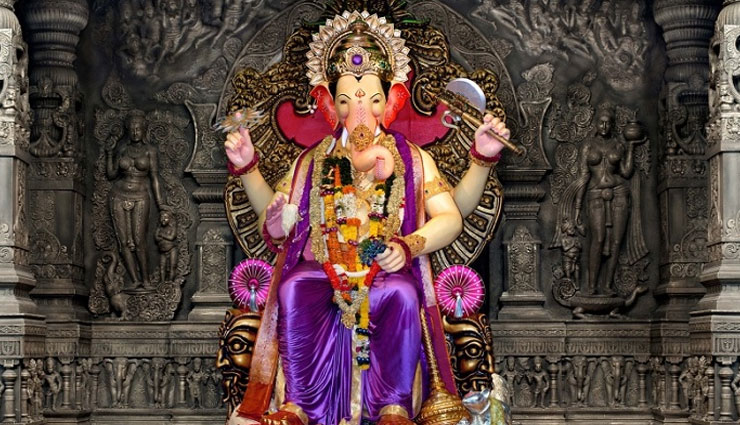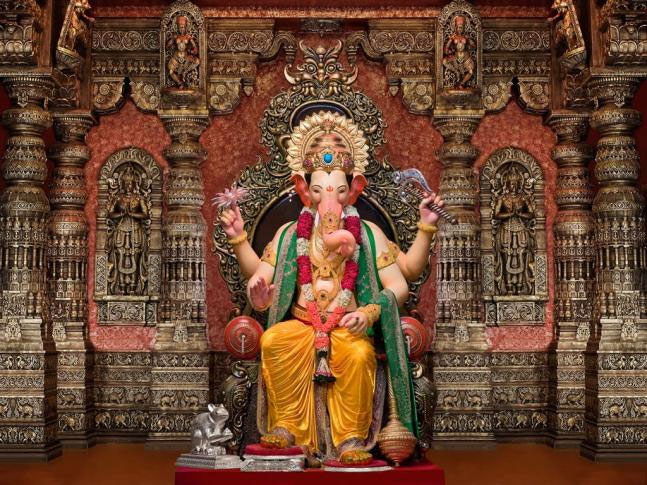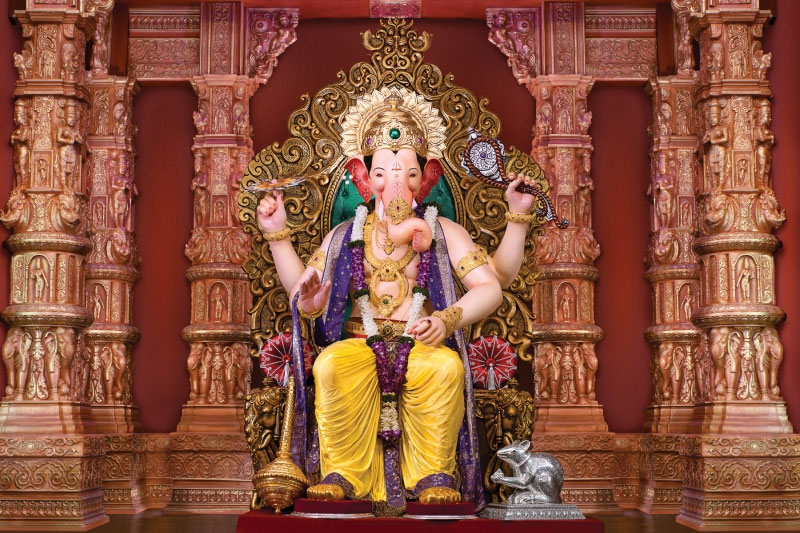Story Of How Lalbaughcha Raja Got Its Name
By: Pinki Wed, 12 Sept 2018 1:29:37

It's your average middle-class Maharashtrian locality. That's if you walk past hurriedly, drive past furiously, most likely over a flyover. But if you have bothered to set out on foot and follow one of Lalbaug's several meandering alleys, you'd stumble on the story of the making of a city, packed with twists and turns from the rise of textile mills, the arrival of a migrant Konkani population in the late 19th century to the closure of mills in the 1980s, and the bulldozing of chawls to make way for malls.
Since the area is undergoing re-development even as you read this piece, it might be time that you set aside a Sunday to discover the story behind it before its face changes beyond recognition.
Beyond Bombay Tours, an initiative started by Shriti Tyagi in 2006, takes curious Mumbaikars and tourists on a walk through lesser-known pockets of the city. It's run by a group of four full-time professionals, who double up as tour guides. Our guide for the day, Vaydehi Khandelwal, is a commercial photographer who has shot the locality extensively. We had company from fellow walkers: entrepreneur Firdaus Variava and his wife Nidhi.
The area was just about stirring to life when we assembled in front of Ganesh Talkies, and stepped into a Ganeshshala (workshop where Ganesh idols are moulded). The dimly-lit workshop housed back-to-back rows of colourful idols freshly painted and left to dry. More than 20,000 artisans arrive in Mumbai each year from nearby villages, to pitch in with idol-making. For the rest of the year, they pursue alternate professions.
Another shala located just a few shops away, housed larger idols that spoke of current concerns including global warming (an adorable Ganesh was depicted hugging a globe), and took on varied saintly avatars including that of Sai Baba
The area, today, may be synonymous with the Ganesh Chaturthi celebrations surrounding Lalbaugcha Raja, but the start was a humble one. Lalbaug, along with areas like Worli and Parel, was called Girangaon or the 'village of the mills'. This was back in the early 1900s, thanks to the 130 textile mills that were spread over a 600-acre area. "At the heart of Lalbaug, near Peru Chawl, stood a market place, which was later shut down in 1932. That's when the vendors and fishermen, whose livelihood was affected, took a vow and prayed to Lord Ganesh to help cut out obstacles, and let the market re-open," said Vaydehi.

Their wish was fulfilled when a plot of land was granted to construct a permanent market (today's Lalbaug market). As a mark of gratitude, the traders set up an idol of Ganesha dressed as a fisherman. The date was September 12, 1934. Seventy seven years later, Lalbaugcha Raja is still considered a wish-fulfilling deity (Navsacha Ganpati) with people queuing up for hours for darshan.
11.05 am Lalbaugcha Raja pandal
Work was on in full swing in the pandal (tent), with dozens of workers hammering away to shape the idol. From the day the idol-making process begins, sculptors create a replica of the idol next to the pandal, which is showered with curd and jaggery and worshipped with flowers till Ganesh Chaturthi, when the main idol arrives.
11.20 am New Hanuman Theatre
The New Hanuman Theatre was the seat of Tamasha, a folk dance form synonymous with Maharashtra. "After a hard day's work, the mill workers sought entertainment. They would come here and spend time watching traditional performances that reminded them of home. The set-up was pretty basic: a couple of bullock carts would be lined up and the dances would unfold on each," says Vaydehi.
Today, you won't find a trace of the ancient folk art except for a shrine dedicated to Mari Aai in a courtyard. The shrine is considered unique since it is dedicated to a Tamasha artist who used to get 'var' or possessed by the goddess. While most Tamasha artists aren't considered respectable, Mari Aai is worshipped even today.
11.45 am Chiwda Galli
All the walking called for some food, so the next stop had to be Chiwda Galli. The aroma of freshly fried farsan wafted through the air, leading us to a narrow lane lined with savoury stalls. The USP: every shop here sells a different variety of Chiwda. Some of the 10-odd shops are at least four decades old, set beside two factories.
Located further down is Masala Galli (lane of spices), where stores owned by natives from Sangli sell a range of sun-dried, hand-pound spices. Khamkar & Co is the most well-known. Drop by to check out the Guntur Sannam from Andhra Pradesh, one of the hottest chillies in the world.

12.10 pm Chand Shah Dargah
Adjacent to the Chiwda Galli is the Chand Shah Dargah, a Sufi shrine dedicated to Chand Shah, the younger brother of Lal Sayad Shah, after whom the locality is named. The story goes that the dargah was demolished during the 1992-93 communal riots, and had to be rebuilt from scratch. In a heart-warming case of secularism, a Hindu family has been taking care of the dargah since then. The road outside is chaotic, but once you step inside the dargah courtyard, silence prevails. A well adjacent to it has been donated by a Hindu Tamasha group.
12.20 pm Lal Shah Dargah
The Lal Shah Dargah at Tavaripada is located some distance from here, and is in memory of the 14th century Muslim saint, whom Lalbaug is named after. It is located between meandering lanes and surrounded by Hindu settlements on all sides.
12.35 pm Ganesh Galli
At this stage, if someone asked us to retrace our steps, it would have been impossible. Choosing to look ahead, we walked towards Ganesh Galli, renowned for its unique Ganesh pandal d �cor and themes. This year, they are going to replicate the Chamundeshwari Temple of Mysore through a 40-feet structure that will house a 22-feet idol of Ganesh atop a mouse chariot. Expect nothing less than a gorgeous set since the moulding engineer happens to be a Bollywood set designer, we are told.
1.05 pm Chawls
The chawls at Tavaripada were once dormitories housing the migrants. Later, the migrants decided to move into chawls with their families. Most chawls were located close to factories to allow them easy access. Khanavals (common kitchen) allowed the wives of migrant mill workers to cook together, and feed the single men at nominal costs. Over the years, these chawls threw up smaller ventures like beauty parlours and tuition classes, which were run from the chawls itself.
The mill hub went through a period of turbulence when the Great Bombay Textile Strike of 1982 broke out. Workers from more than 50 textile mills across the city went on strike, demanding higher wages and better working conditions. Most of the mills downed shutters and thousands were left unemployed. Vaydehi says, "During this period, several of them migrated to their villages, while others took to anti-social activities to fend for themselves. By the late 1980s, Lalbaug had an active underworld culture."





-1713979511-lb.jpg)